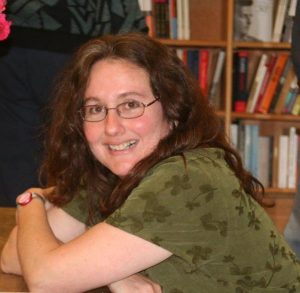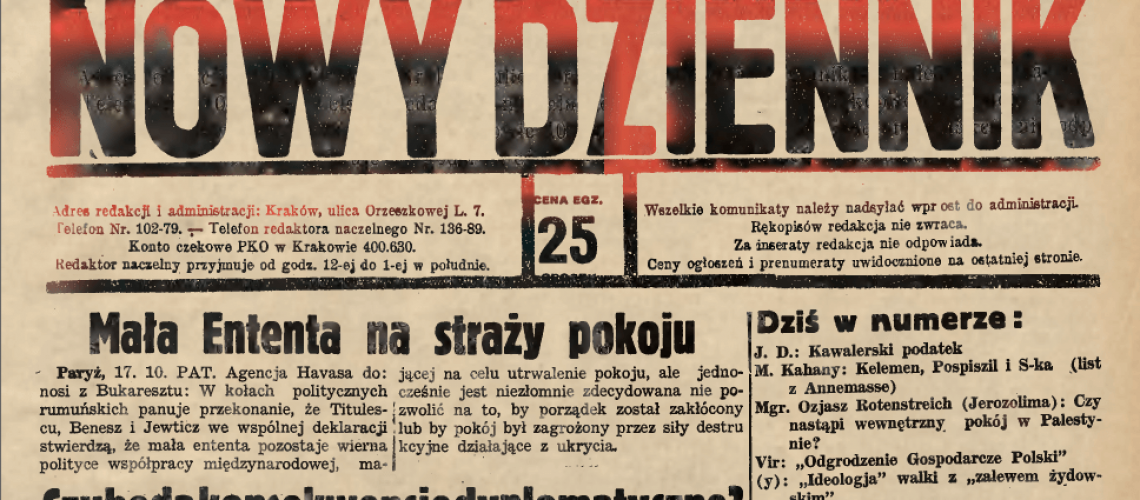Among the new offerings in the relaunched Bais Yaakov Project website is a section devoted to Polish press coverage of Bais Yaakov in the interwar period. But what can we discover about the movement from Polish articles, as opposed to what we learn from the Hebrew or Yiddish press, or Bais Yaakov’s own journal? The first article that turned up in a search, by the BYP member Charna Perman, was a report about the apparent suicide of a student at the Krakow Seminary, an event that understandably caught our attention and that was not reported in the Yiddish or Hebrew press. Click here to see the original newspaper article (on page 15), Benjamin Bandosz’s translation of the article can be found here. The student, who was from Romania, was described as having been distraught the night before leaving the seminary, as “obviously despondent” when she arrived, and asking to sleep on the fifth rather than third floor. It was true that neither her family nor anyone at the school knew any more details about what might have been troubling the young woman, but the first article made it seem likely that she had indeed committed suicide.
Even more thought-provoking was a follow-up article a few days later, which declared the investigation into the shocking event (which included an autopsy) closed. Click here to see the original article on page 14 The investigators had determined that it was impossible to know whether the girl had jumped out the seminary window or rather accidentally fallen. With both possibilities in play, the investigation was inclined to allow for a tragic accident, rather than continue to suppose, as at the outset, that this young woman had committed suicide. As evidence for this second possibility, the writer mentions a key piece of evidence: the dress that had been wrapped around the girl’s legs, although she was wearing a nightgown. This dress allowed the investigators to suggest a scenario for a tragic accident: Miss Winter (we never learn her first name) had been shaking out or dusting off her dress out the window when she fell. No doubt such an explanation came as something of a relief to the school administration, which might be charged with psychological neglect, and to the parents, who could now legitimately bring their daughter to Jewish burial, something denied to suicides. Perhaps the girl’s fellow students, too, preferred to mourn a shocking accident than recognize the presence in their midst of such grievous psychological pain. And the newspaper, which tended toward social conservatism, might also have preferred to propagate the less sensational alternative, even if they followed the investigators in first entertaining one and then another possibility.
The investigation saw the significance of the dress in helping construct a scenario for an accidental fall. But reading that article as someone steeped in the culture of Bais Yaakov, I interpreted that dress differently. Might this dress signal that even in the extremis of the act of suicide, this Bais Yaakov girl was working within the framework of tsnius, the cornerstone of Bais Yaakov culture then as now? Was she ensuring that even in her death, her legs were not exposed? If this was a suicide, it was one that operated within the bounds of Bais Yaakov culture, leaving that world without also transgressing its values. Every life is a mystery to others, and those who surrounded this seminarian were unable (or unwilling) to describe her private pain. But in her unwillingness to expose her naked legs (if I am reading that detail right), the Bais Yaakov girl who jumped out the seminary window (if indeed it was a suicide) both covered herself from exposure and gave us a glimpse into her most intimate thoughts.

Naomi Seidman is the Chancellor Jackman Professor of the Arts in the Department for the Study of Religion at the University of Toronto and a 2016 Guggenheim Fellow; her 2019 book, Sarah Schenirer and the Bais Yaakov Movement: A Revolution in the Name of Tradition, explores the history of the movement in the interwar period.

